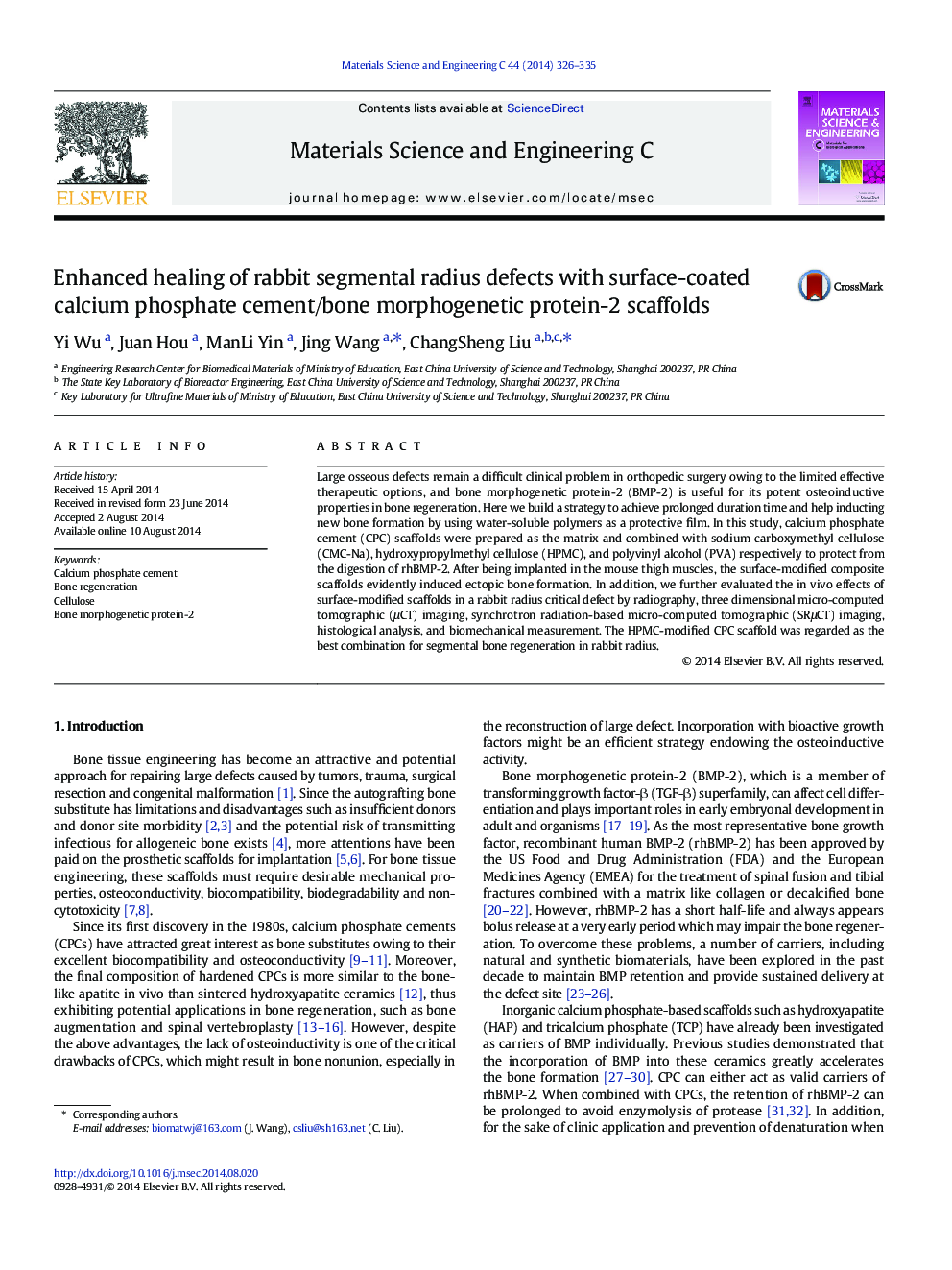| Article ID | Journal | Published Year | Pages | File Type |
|---|---|---|---|---|
| 1428290 | Materials Science and Engineering: C | 2014 | 10 Pages |
•A simple surface-coating method was used to fabricate composite scaffolds.•Growth factor was protected from rapid depletion via superficial coating.•Significant promotion of bone regeneration was achieved.•HPMC-modification displayed optimal effect of bone regeneration.
Large osseous defects remain a difficult clinical problem in orthopedic surgery owing to the limited effective therapeutic options, and bone morphogenetic protein-2 (BMP-2) is useful for its potent osteoinductive properties in bone regeneration. Here we build a strategy to achieve prolonged duration time and help inducting new bone formation by using water-soluble polymers as a protective film. In this study, calcium phosphate cement (CPC) scaffolds were prepared as the matrix and combined with sodium carboxymethyl cellulose (CMC-Na), hydroxypropylmethyl cellulose (HPMC), and polyvinyl alcohol (PVA) respectively to protect from the digestion of rhBMP-2. After being implanted in the mouse thigh muscles, the surface-modified composite scaffolds evidently induced ectopic bone formation. In addition, we further evaluated the in vivo effects of surface-modified scaffolds in a rabbit radius critical defect by radiography, three dimensional micro-computed tomographic (μCT) imaging, synchrotron radiation-based micro-computed tomographic (SRμCT) imaging, histological analysis, and biomechanical measurement. The HPMC-modified CPC scaffold was regarded as the best combination for segmental bone regeneration in rabbit radius.
